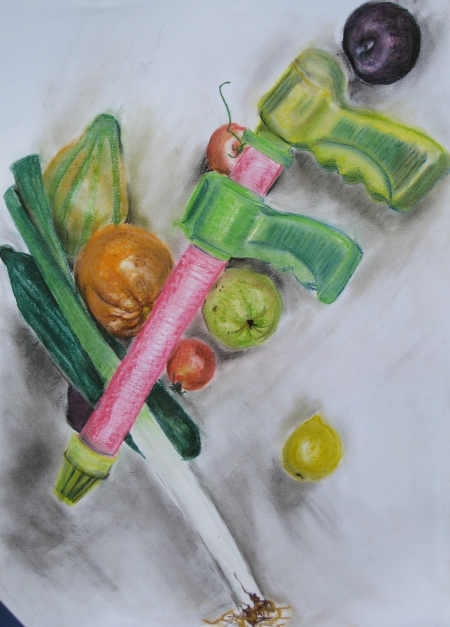Archive for the 'perception' Category
Thursday, January 1st, 2009
randform wishes a happy new year to everybody!
just be careful – in particular given the rather bleak economic outlooks it will get even more easy to loose oneself in dreamworlds, so I wouldn’t wonder if the boom of the game industry is going to continue. In this TED video (via serious games) David Perry describes the evolution of video games, however of special interest in this video may be an -what he calls opinion of a student- which is a (realistic?) documentary about a self acclaimed video game addict (second part of the talk, the whole talk is about 20 min). The documentary describes the cognitive changes which are due to excessive video gaming.
posted by nad | 3d, animation, architecture, art and design, communication, economy, environment, games, perception, software, trips, visualization | No Comments »
Saturday, December 20th, 2008
A reader was asking in a preceding post:
Thank you for interesting explanation. So you say that high-rank officials who does not like to be critized should better take the pills you mentioned, since they probably have this sickness you describe?
(more…)
posted by nad | berlin, bio, communication, math, perception, procrastination, visualization | 6 Comments »
Wednesday, December 10th, 2008
The following post is in part an answer to a question in a randform comment.
(more…)
posted by nad | bio, communication, economy, perception, procrastination | 37 Comments »
Friday, September 12th, 2008

The revelation of revolting food: “Wer hat das schoenste Gemuese im Land?” pastell on paper, artwork by Matter Bahri
The recent (partially rather violent) food crisis has shed some light on the conflicts to be expected if resources are getting even scarcer.
(more…)
posted by nad | bio, climate, communication, environment, perception | 2 Comments »
Thursday, June 19th, 2008

The above image displays a visualization of the socalled blancmange curve at various iteration steps and with a slightly randomized sawtooth function. The blancmange curve -not to confuse with the blancmange pudding– is -like e.g. also the devils staircase a socalled pathological function, i.e. a function which displays a counterintuitive behaviour. In order to obtain the blancmangecurve one sums up little sawteet h which get smaller and smaller. However also if the sawteeth are getting in the end infinitely small this particular curve will never be smooth.
mathematical subleties after the more
(more…)
posted by nad | math, perception, visualization | No Comments »
Wednesday, May 28th, 2008
David Friedman has an ongoing series of ~60 seconds short movies on his blog ironic sans. I liked the above “60 seconds in the live of a commuter” a lot.
posted by timh | perception, Uncategorized | No Comments »
Monday, February 25th, 2008
 “no nodes and ways in the paths of a root“, image by —|.
“no nodes and ways in the paths of a root“, image by —|.
Dennis Lorson an Electrical Engineering/CS student at the Catholic University of Leuven, Belgium is currently looking for suggestions of how to enhance his program pathway, which is a graph vizualisation programm, which is displaying among others the various radii of information retrieval (screenshot demonstration).
From the website:
It accomplishes this by presenting you with a graphical “network” representation of your visited article pages. A node represents an article, a connection between two nodes means, of course, that you’ve gone from the first article to the second one. You can save the network you’ve created to disk and recover it.
This way, you’re able to keep track of everything: what you’ve looked at, how you got there and just how it all fits together.
via
metaportaldermedienpolemik
other wikipedia visualization links via IBM’s Visual Communication Lab
posted by nad | communication, perception, procrastination, software, visualization | No Comments »
Monday, October 29th, 2007
If we move around in space-time we can obtain much more information about the surrounding space-time than by just watching it. For example swimming is very different in a curved than in a noncurved space (-> here a website where observations are made how swimmers move around in various environments).
However linking sensoric information with motoric information, like in computer science applications is a very difficult task. The library on the website of David Philipona of the Laboratoire Psychologie de la Perception has a good collection of links, like for example to the Max-Planck-Institut for Biological cybernetics with its famous virtual treadmill project cyberwalk.
The group at the Laboratoire did some works in order to find a mathematical formulation of how to gain information about the surrounding space via sensoric/motoric information, like e.g. in their paper
Perception of the structure of the physical world using unknown multimodal sensors and effectors
posted by nad | computer vision, perception, physics, robotics, software | No Comments »


 “no nodes and ways in the paths of a
“no nodes and ways in the paths of a